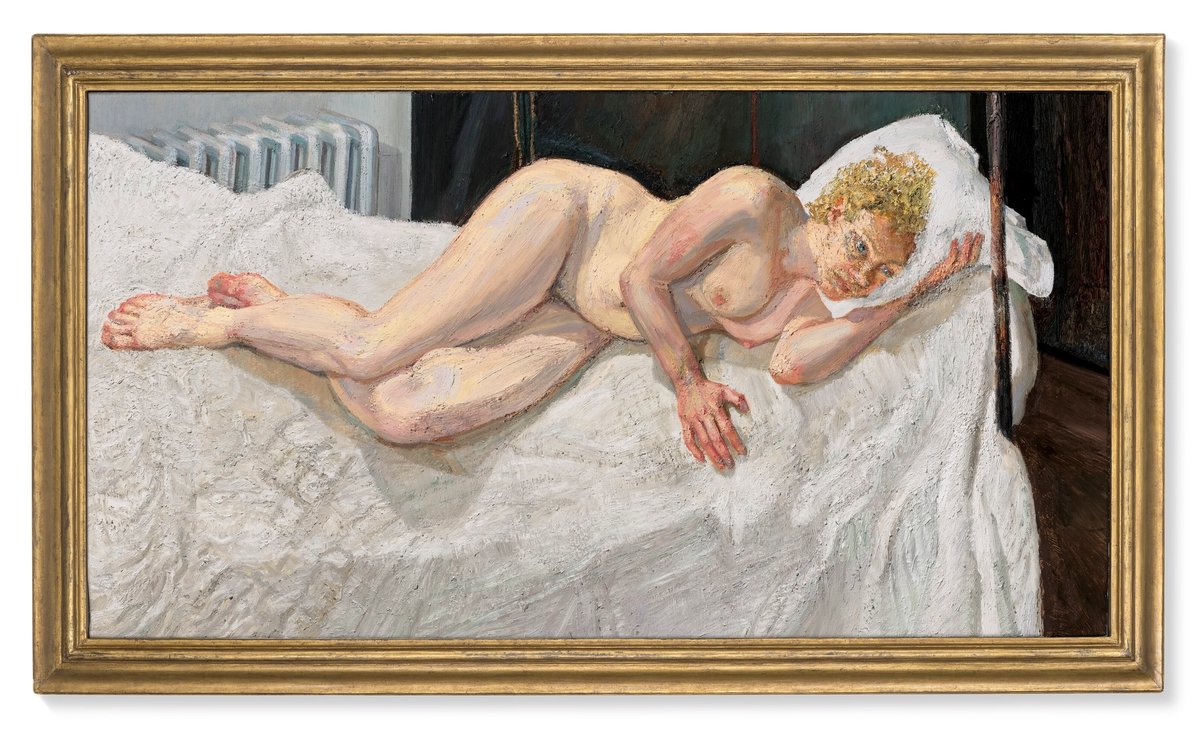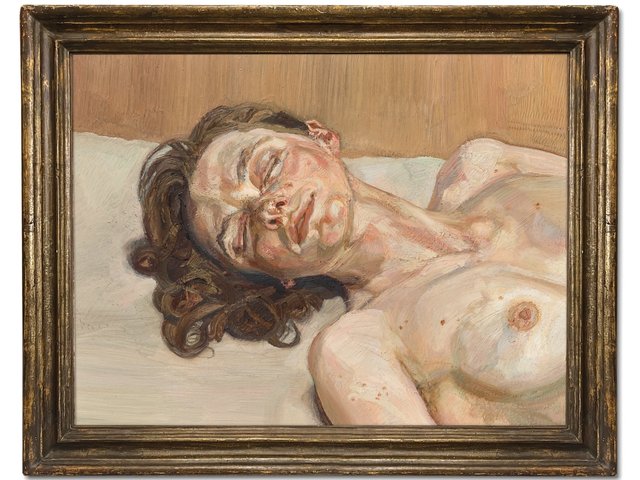A late Lucian Freud painting of Ria Kirby, an art handler at the Victoria & Albert Museum in London, is appearing at auction for the first time during Frieze week next month, with an estimate of £10m to £15m.
Ria, Naked Portrait (2006-07), painted a few years before Freud’s death in 2011, will be included in Christie’s 20th/21st century evening sale in London on 9 October, consigned from a private European collection. It carries a third-party guarantee, meaning it is assured to sell.
In 2006, during the hang of Freud’s joint exhibition with Frank Auerbach at the V&A, a 25-year-old Kirby asked the octogenarian artist if she could sit for him. The critic Martin Gayford, in a 2007 article for The Telegraph titled Lucian Freud: Marathon Man, remembers Freud saying to him: "That girl I met, I think I could work from her."
And he did—every night after work, Kirby would arrive at his Kensington Church Street studio and sit for up to five hours at a time. Hungry, the unlikely pair would go for dinner at Clarke’s down the road, or to the Wolseley in Mayfair. Over the next 16 months Kirby would post for nearly 2,400 hours, Freud being famously demanding of his models. The result was this single portrait, encrusted with layer on layer of Freud’s favourite Cremnitz White paint.
In Gayford’s Telegraph article, Kirby said of the experience: “It became second nature, and felt completely natural. I realised there’s no point in trying to be anything. You just have to lie there and be yourself. But in the end I found it quite a release. It was one place I could be where I didn't have anyone phoning me or hassling me. All I had to do was lie still, which I’m quite good at.”
The reclining nude, which was bought by the present owners from Acquavella Galleries in New York in 2008, was included in the final room of Freud’s Portraits exhibition at London's National Portrait Gallery in 2012. It was also loaned to the Tate Modern in London in 2007, and has been widely published in Gayford, William Feaver and David Dawson’s books on the artist.
“This painting was extended twice, so he was in his 80s but he was making one of the largest format paintings of his life,” says Katharine Arnold, the head of Post-War and Contemporary Art for Europe at Christie's. This may be a late period work but, Arnold says, “this is not an artist fading away—the act of painting kept him alive.”
The spartan interior of the studio is well known to us all—the crumpled sheets, iron bedstead. As Arnold says, “I know that radiator”.
Freud once said that “paint ages like flesh”, a comment that struck Arnold: “It’s this concept of how you mould oil paint into flesh, and how you observe the changes in yourself and your own body, and then how you compare them to young life—Freud was in his 80s and painting a 25-year-old woman. I think in the end, as people, we are more or less the same, just our bodies change. He got it.”
“For me, Freud is one of the greatest painters of the 20th century, so this sits alongside a Rubens, a Caravaggio, a Titian,” Arnold says. “It’s a really exciting picture to be bringing back to London.”
Arnold has not met Kirby, who is, apparently, no longer working in the arts: “What I’ve found is that most of Freud’s sitters are incredibly private. They want to come and see the painting and have their own, very private reflections on it. When we sold Girl with Eyes Closed (1986-87) [in 2022, for £15.1m with fees], the sitter, Janey Longman, was very involved with how to present the painting. These are intense private moments between the artist and the sitter.”
Girl with Eyes Closed, Arnold says, had five bidders competing for it in 2022: “They were all private collectors, from all over the world. There is particular interest in his work from Europe, and especially the UK, but I anticipate interest from North America too, for sure.”
Of the Frieze week offering overall, despite a tricky market Arnold says: “I’m really pleased with the sale we’ve put together. We’ve already announced the Balloon Monkey by Jeff Koons [est £6.5m to £10m], and there are a handful of other significant things that I think will make new world records.”
“In putting together this sale, I went back to when I started in the job in 2010, looking back at those sales and what they represented,” Arnold says. “Effectively I think the market is interested in good quality, freshness, real stories and real pictures, and it has become very much about real collectors—there are fewer speculators. Part of that also comes from a degree of generational shift—there will be great pictures that come to the market, but there is also a new generation of collectors building serious collections that will buy them.”




